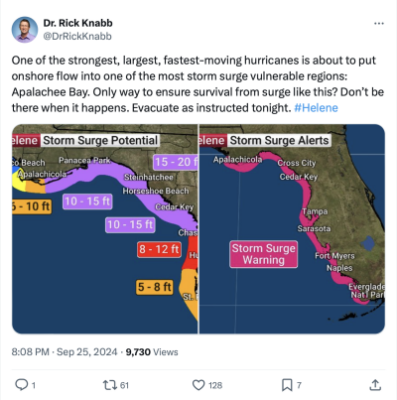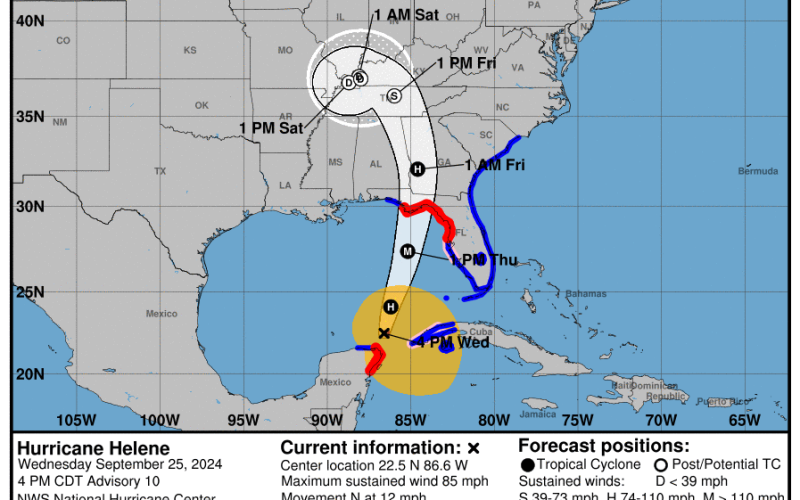Hurricane Helene is accelerating its pace north across the Gulf of Mexico and expected to strengthen to a category 4 storm, before making landfall Thursday evening on Florida’s Big Bend coastline with storm surge up to 20’, the National Hurricane Center said.
Forecasters say Helene will intensify to sustained windspeeds of 115 knots. Its course will interact with the gulf’s Loop Current, where water temperature around 86 degrees Fahrenheit will help energize the storm as it heads for the coast and then inland near Tallahassee and into Georgia.
Widespread storm surges along the Florida west coast could reach 15’ to 20’ from Carrabelle to Suwannee River and 5 to 8 feet at Tampa Bay. At 8 p.m. Wednesday the Coast Guard set Port Condition Zulu, closing the Tampa Bay channels to inbound and outbound shipping traffic.
The Coast Guard 7th District headquarters said Wednesday morning that an area command post was established at Coast Guard Air Station Miami in Opa Locka, Fla.,
to coordinate response and recovery efforts. The effort includes Coast Guard assets from San Juan, Puerto Rico, throughout Florida and north to Charleston, S.C.
The scenario is similar to Hurricane Idalia made its Florida landfall in August 2023, with winds of 125 knots along the Big Bend before weakening to category 2 and moving north into Georgia.
But the National Hurricane Center is warning that surge and flash flooding from Helene could extend far inland. Florida’s state capital Tallahassee braced for its worst tropical weather threat in decades.

At mid-day Wednesday, the federal Bureau of Safety and Environmental Enforcement reported personnel have been evacuated from a total of 17 offshore oil and gas production platforms, or 4.58% of the 371 manned platforms in the Gulf of Mexico.
Workers were evacuated from one non-dynamically positioned (DP) rig, while three DP rigs were moved off location out of the storm’s path as a precaution, according to BSEE.
“This number represents 14.3% of the 21 DP rigs currently operating in the Gulf. DP rigs maintain their location while conducting well operations by using thrusters and propellers; these rigs are not moored to the seafloor, so they can move out of harm’s way in a relatively short time frame,” according to an agency summary. “Personnel remain on board and return to the original location once the storm has passed.”
“From operator reports, BSEE estimates that approximately 29.18% of the current oil production and 16.85% of the current natural gas production in the Gulf of Mexico has been shut-in.”





